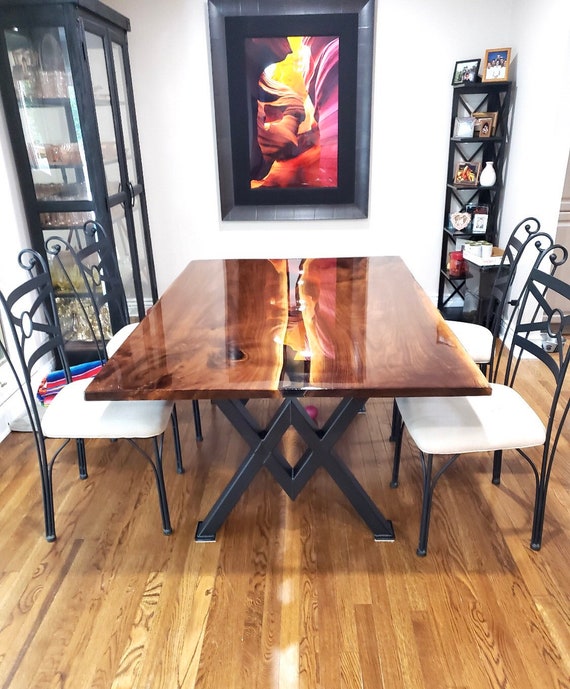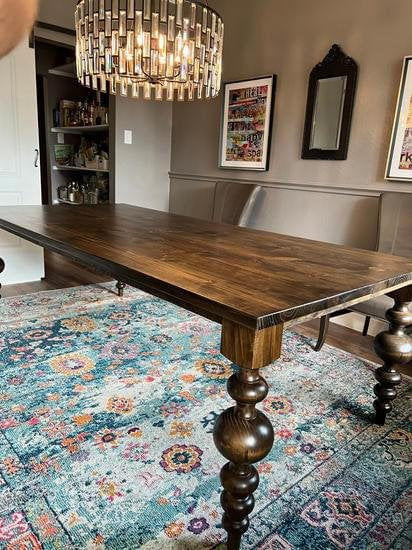Find the Ideal Dining Room Table Legs for Any Interior Design Style
Find the Ideal Dining Room Table Legs for Any Interior Design Style
Blog Article
From Conventional to Modern: Locate the Ideal Dining-room Table Legs for Your Style
While timeless designs such as cabriole and transformed legs evoke a feeling of ageless sophistication, modern styles like hairpin and geometric choices provide an opportunity for striking visual passion. As you take into consideration these aspects, the inquiry stays: how can you seamlessly incorporate these diverse leg designs to develop an unified dining experience?
Recognizing Table Leg Styles
The range of dining room table leg styles can substantially affect both the aesthetic appeals and performance of the area. Each leg design contributes one-of-a-kind aesthetic aspects and practical features, satisfying varied style preferences and use demands. Comprehending these styles is essential for picking the ideal dining table that straightens with your general interior decoration vision.
For example, tapered legs use a tidy, traditional appearance that can boost an area's elegance, while pedestal bases offer stability and maximize legroom, making them optimal for smaller sized spaces. Barrette legs, a characteristic of mid-century modern style, introduce a commercial style, permitting an airy, open feel. Trestle legs stimulate rustic charm, giving robust support and a sense of eternity.
Wood legs can bring warmth and structure, whereas steel options often convey a sleek, contemporary ambiance. Inevitably, recognizing table leg styles is necessary for creating a cohesive dining location that reflects personal style while making certain usefulness and comfort.
Standard Table Leg Options
When picking dining-room table legs, conventional alternatives typically symbolize classic elegance and craftsmanship. These layouts reflect a rich heritage and a commitment to high quality, making them excellent for those that appreciate classic looks.
Among one of the most iconic typical leg styles is the cabriole leg, characterized by its graceful rounded shape. This style often features decorative carvings and is most generally found in Queen Anne and Chippendale furniture. Another popular option is the transformed leg, which flaunts a series of smooth, rounded forms that give a timeless look while preserving security.
Moreover, the straight leg, while basic, uses a strong and unadorned framework that can blend flawlessly with a selection of tabletop designs. For those drawn to ornate detailing, claw-and-ball feet legs evoke a sense of grandeur and can work as a stunning prime focus in any kind of dining room.
Last but not least, stand bases, although not strictly legs, offer an alternate conventional option that enables enough legroom and can be perfectly sculpted. Each of these standard leg styles adds to the overall ambiance of a dining-room, marrying function with aesthetic appeal.

Modern Table Leg Layouts
Modern table leg styles offer a varied variety of designs that highlight ingenious products and tidy lines. These layouts typically focus on performance while offering as striking focal factors within a dining space. Minimal aesthetic appeals prevail, with legs crafted from products such as metal, description glass, and crafted timber, which add to a contemporary and airy feeling.
One popular style is the hairpin leg, identified by its slender, conical framework that offers security without overwhelming the table top (dining room table legs). This style is usually found in mid-century contemporary furnishings and can effortlessly match numerous dining table shapes. One more pattern is using geometric shapes, where legs may handle asymmetrical or angular forms, adding aesthetic passion and a touch of artistry

Mixing Styles for One-of-a-kind Rooms
Often, property owners seek to create distinct dining spaces that mirror their individual style by blending different design elements. This strategy permits for the consolidation of diverse appearances, causing an unified yet unique environment. Coupling a rustic wooden table with sleek, modern steel legs can develop a captivating contrast that boosts the room's total appeal.
Additionally, incorporating vintage table legs with contemporary table tops can evoke a feeling of background while preserving a modern-day perceptiveness. Such combinations not only display private taste however also motivate creativity, permitting property owners to curate a space that really feels both individual and welcoming.
Color plays a critical role in this blending process; choosing table legs that match or contrast with the have a peek at this site existing color design can improve aesthetic passion. Whitewashed legs can soften the daring of a dark table surface, developing a well balanced aesthetic.
Tips for Picking the Right Legs
Choosing the right table legs is essential for attaining both performance and aesthetic charm in your eating area. Begin by thinking about the overall design of your room. Typical settings gain from legs that feature intricate makings or transformed designs, while modern areas may ask for smooth, minimal designs.
Next, assess the elevation and security of the legs. dining room table legs. Common table range in between 28 to 30 inches in height, so guarantee the legs complement this measurement for convenience. In addition, robust materials, such as wood or metal, can boost stability and durability
Evaluate the leg form too-- alternatives include directly, tapered, or stand styles. Straight legs offer a traditional look, while conical legs can include a touch of sophistication. Pedestal bases give enough legroom and are suitable for smaller spaces.
Final Thought
In summary, selecting the ideal eating room table legs calls for cautious consideration of both contemporary and standard styles. By harmonizing leg style, elevation, and material with the general decoration, a natural and inviting atmosphere can be accomplished.
The range of dining room table leg designs can considerably affect both the appearances and performance of the area. Inevitably, comprehending table leg designs is essential for creating a natural eating area that shows personal style while guaranteeing functionality and convenience.One of the most famous conventional leg designs is the cabriole leg, characterized by its stylish bent shape. Straight legs provide a traditional appearance, while tapered legs can include a touch of style.In summary, picking the perfect eating area table legs requires cautious consideration of both modern-day and traditional styles.
Report this page